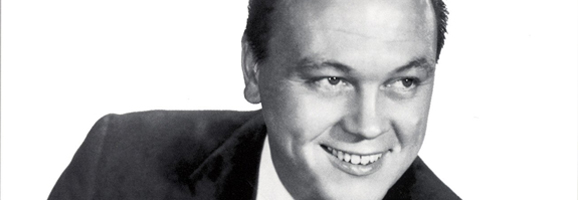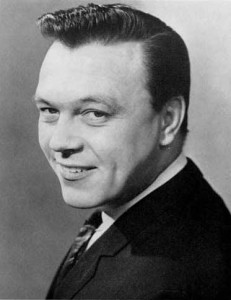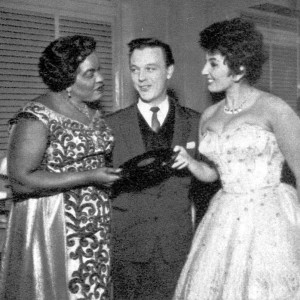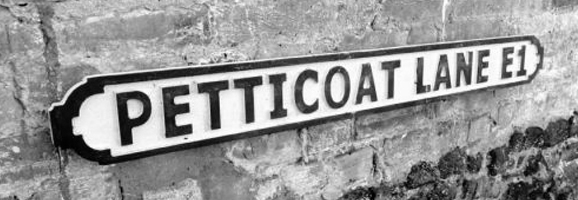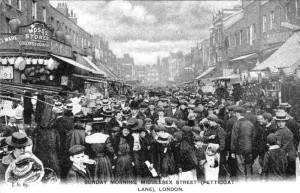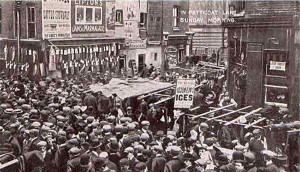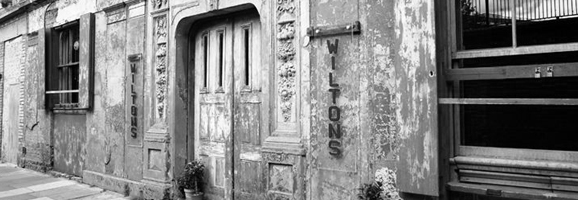
Half hidden down a small pedestrian path called Graces Alley, a short way between Cable Street and The Highway is one of the East End’s gems and the world’s oldest surviving grand music hall – Wilton’s.
Unlike so many buildings in the East End that have been ‘gentrified’ over the years, the first time visitor to Wilton’s Music Hall would be mistaken in thinking that this is a crumbling relic of a bygone age.
Wilton’s was originally an alehouse from around 1743 and was renamed The Mahogany Bar in 1826 as the then landlord was the first to fit a magnificent mahogany bar and fittings into his pub. This was quite unprecedented in an East London pub of the time, and may well have set the scene for the traditional ‘Victorian’ look that we associate with public houses today. After about ten years, a concert room was built around the back of the pub and it became known as The Albion Saloon. For the first time, it became legally entitled to put on full length productions.
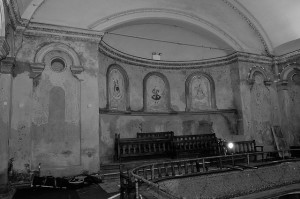
The buildings that finally make up Wilton’s today comprise five terraced houses – and to the modern eye are extremely shabby, but there was a good reason for their appearance. The bar was kept as the public entrance, and the music hall was actually built in the area behind the existing frontage. This represented common practice at the time, for as you can imagine, ‘street frontage’ for music halls was extremely expensive.
Wilton’s Music Hall in its original form only lasted for around 30 years, before a fire forced its closure, but during its heyday, Champagne Charlie (George Laybourne) and George Ware, who wrote the music hall classic ‘The Boy I Love is Up in the Gallery’ both performed here. A Methodist Mission eventually took over the tenancy and during the Great Dock Strike that hit the East End in 1889 served over 1000 hot meals a day in the soup kitchen that had been set up in the Mahogany Bar.
Wilton’s Music Hall remained in the hands of the Methodist Mission for almost seventy years until 1956, helping the poverty stricken East Enders through the trial and tribulations of The Blitz at the height of the Second World War.
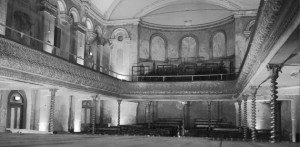
As part of the enormous changes to the East End in the 1960’s, the building was earmarked for demolition as part of the slum clearance programme, and the Methodists were asked to leave. Fortunately, the plight of the building came to the attention of among others, Sir John Betjeman, Spike Milligan and Peter Sellers. They started a campaign to stop its demolition, and the building was finally purchased by the Greater London Council, gaining Grade II listing in 1971.
Regrettably, the years of neglect had taken their toll and the building itself was suffering from a considerable amount of structural damage and extensive decay. However, a concerted campaign of fundraising has led to its gradual restoration (although a lot of work has still to be done) and thanks to the efforts of the fundraising team, the public can still sit in the grand auditorium and experience for themselves first hand shows, history tours and special events that Wilton’s Music Hall puts on to this day.

